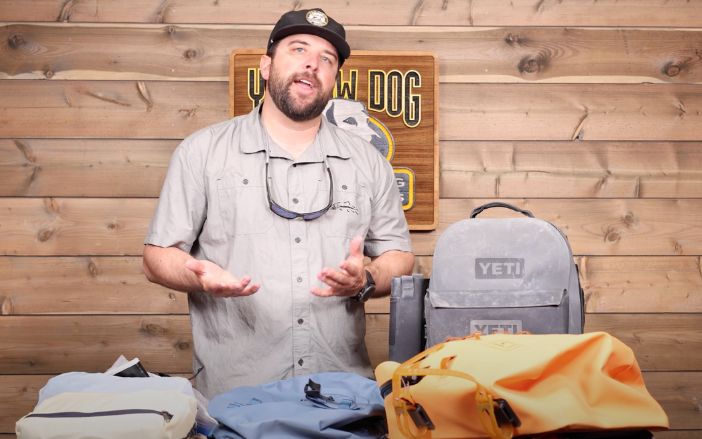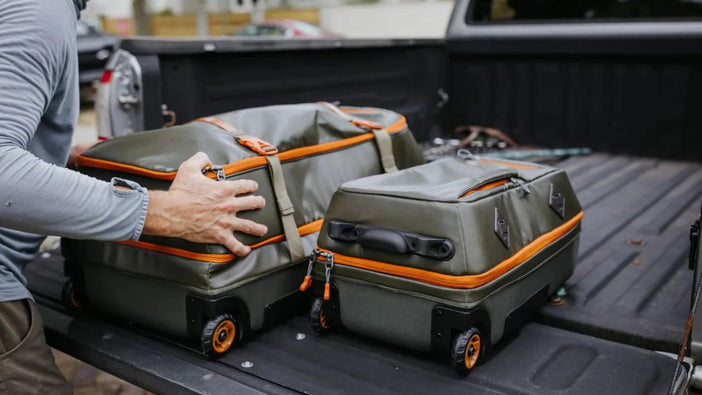About Kamchatka
Wild rivers, large and native rainbow trout, and a fly-fishing adventure of true exploration. This is the Kamchatka that Yellow Dog has experienced for numerous years. Our Kamchatka fly fishing outfitters have identified a carefully selected array of watersheds—some of them are the most remote and untouched native rainbow trout waters on earth and others are carefully rested and rotated by our experienced outfitters.
Because of this, the large surface-feeding trout in Kamchatka grow big and hungry.
Kamchatka, larger in landmass than California, is home to valleys backdropped with volcanoes, mountains topped with snow, native birch forests, and beautiful wildlife. With a cap on the number of anglers on each trip, a trip to Kamchatka is legendary on many levels.
Species

Rivers in Kamchatka are home to rainbow trout, Dolly Varden, all five species of Pacific salmon (and a sixth on some rivers), and the rare “super kundzha.” These species are native to Kamchatka—no planted or hatchery fish in these waters. Rainbow trout average close to two feet and some push thirty inches. Dolly Varden run a bit smaller with most topping out at eighteen to twenty inches. Pacific salmon species, present during most of the season, are similar in size to their Alaska brethren. Kundzha, ferocious yet rare and available in some rivers, can top twenty pounds but average around five to ten pounds.
Where is Kamchatka?

Kamchatka is a long peninsula extending south from the Russian mainland. It may be Russian, but it is closer to Anchorage, Alaska than to Moscow. Located north of 56 degrees latitude, Kamchatka is ideal coldwater fish habitat. A variety of ways exist to get to the remote peninsula—through Anchorage, Seoul, or Moscow. Kamchatka is home to only one major highway, a UNESCO world heritage site, and wilderness fishing unlike any other place on earth.
When is the fishing season?
July through early September is the fishing season. Temperatures range from highs in the 50s to low 70s. Clouds and showers can be present in this coastal environment with some very sunny and warm days occurring throughout the summer. Daylight hours are long and winds vary. Native rainbows and Dolly Varden are present during the main season. Pacific salmon arrive in several rivers in July, August, and September, and kundzha, although rare, can be available anytime.
Best trout rods, fly lines, and tackle for Kamchatka

Start with bringing an extra rod—traveling to a place this remote demands a back-up rod. With large, powerful rainbows 6 and 7-weight rods are recommended. A 5-weight will work but may feel under-gunned trying to land one of the 28-inchers. Many experienced Kamchatka anglers prefer a 9 and a half-foot length rod as it gives a little more feel and better mending, skating, and streamer swimming capabilities. If you’re going to trout spey or fish two-handed rods, 5 – 7-weight rods in varying lengths are most often used. For single-handed rods choose a matching floating fly line with a front-loaded taper to help turn over large streamers and mice patterns. Have an extra spool or extra reel with a 15-foot medium-fast sink tip. Match your favorite two-handed rod with a heavy front taper floating line as well. It is also a good idea to bring along a light sink tip like a 200-250 grain in case you are fishing streamers and want to get a little bit farther down in the water column.
Trout in Kamchatka are by no means shy and heavy leaders are the norm. The standard mouse and streamer rig will be a 6-foot section of 20 lb. Maxima. It can be helpful to add a tippet section of two feet of 15 lb. or 12 lb. Maxima if the wind is calm or presentations need to be a little softer. Carry a spool of 10 lb. Maxima for shallow water. If dry fly fishing comes into play, have a few tapered leaders in the 1-3X range. 4X tippet and lighter can stay at home.
Best flies for Kamchatka

The excitement of fishing in Kamchatka is casting large mice and streamer patterns, often eliciting exciting takes. There are a plenty of good mouse patterns nowadays, but the two essentials for fly fishing in Kamchatka are Mr. Hankey and the Morrish Mouse 2.0 in sizes 2 to 6. Both work extremely well, are durable, and have a trailing, upturned hook that helps with hookups and decreases fish mortality. For streamers, the Dalai Lama rules supreme and is one of the most effective patterns for Kamchatka’s large trout. Pack some sculpin, leech, and baitfish patterns—Kamchatka trout may eat anything that swims. Choose black, olive, tan, and white. Don’t be afraid to get weird with color choices or varying color combos. We also recommend to focus your streamer selections in sizes 2 to 6. Hatches do occur and when they do, it is nice to have some Parachute Adams, a favorite caddis pattern or two, and Stimulators in sizes 8 to 12.
Waders and jackets for Kamchatka

Even though the fishing season in Kamchatka lines-up with summer, weather is variable. Bring the absolute best waders your budget allows. Fishing days are long and there is a lot of time on the water, so choose waders that fit well, allow for plenty of movement, and are highly breathable. Comfortable and supportive wading boots are a must. For jackets, like waders, choose the best waterproof jacket or shell. Keep the large insulated poofy jackets at home and bring plenty of layers to wear under your waterproof jacket or shell. Do not skimp on waders or a waterproof jacket—these are probably the most important pieces of gear for a fly-fishing trip to Kamchatka.
Other essential gear you should bring

- Traveling across the world to fish in a place of variable weather and a place so remote it requires a helicopter to get there, packing the right gear is essential. Here is a list of items of your own that should make the list.
- Sleeping bag. Most programs require you to bring your own, so this is a must.
- Bug spray. Summer in the arctic regions is defined by long days and…bugs. Pack the most high-powered bug spay you prefer.
- Camp-chillin shoes: Slip-on shoes around camp, like Xratuffs, will feel darn good after you’ve been in wading boots all day.
- Travel pillow or pillow sheet. Good rest is key to fishing well. Pack a travel pillow or a pillowcase. Before you go to bed, stuff your spare clothes into the case.
- Solar charger for charging batteries. Phones won’t get coverage. But, you want your cameras or phone camera to be fully charged.
- Waterproof speaker. Remote and wild is the draw to fish here. Know your group before you break this out at camp as it could be a friend-maker or friend-loser.
- Good book and cards. Disconnecting from technology every so often is core to a proper human psyche. These ensure that.
What to practice at home

As with any world-wide angling travel, some practice prior to your trip makes attaining the perfect trip closer to hand. Being in good physical shape is important. A Kamchatka fly fishing trip is not strenuous, but days are long and the fishing action can be fast and furious. Having to cut a fishing day short because of tiredness or inability to keep up would be disappointing yourself, the group, and the guides.
Be sure your double-haul is dialed and consistent. Familiarity with a two-handed rod is not essential at all but being able to fish a two-handed rod can create a few more fishing options. Additionally, more and more anglers are learning the enjoyment, and ease, of fishing two-handed rods in Kamchatka and for the strong and large rainbow trout that live there.
General expectations

A trip to the wilds of Russia is not your average show-up-and-fish experience. It requires the perfect blend of attitude, skill, and a healthy physical demeanor. In other words, lazy anglers need not apply. Kamchatka is the hyperbole of wilderness fly fishing and perfect for anglers who appreciate succumbing to adventure and remoteness.
If that sounds exciting to you, then a trip to Kamchatka might allow you to be one of the select few world-wide angling travelers who have wet a fly in a river home to trout that have never seen a fly.
Closing thoughts

The reasons for a Kamchatka fly fishing trip can vary—it may be on a personal bucket list; it may be to experience the greatest fly fishing for native trout on earth, or it may be because no other angling addiction will feed the habit.
This is not a trip for everyone, but if you choose to take it, it is a trip everyone will want to hear about.
Related Articles:
- 8 Of Our Favorite Kamchatka Fly Fishing Rivers
- Yellow Dog Travel Hack: Packing Lightly by Cutting Down
- How to Pack Flies in Carry-On Luggage
- The World’s Top 6 Mouse Fishing Trips



























